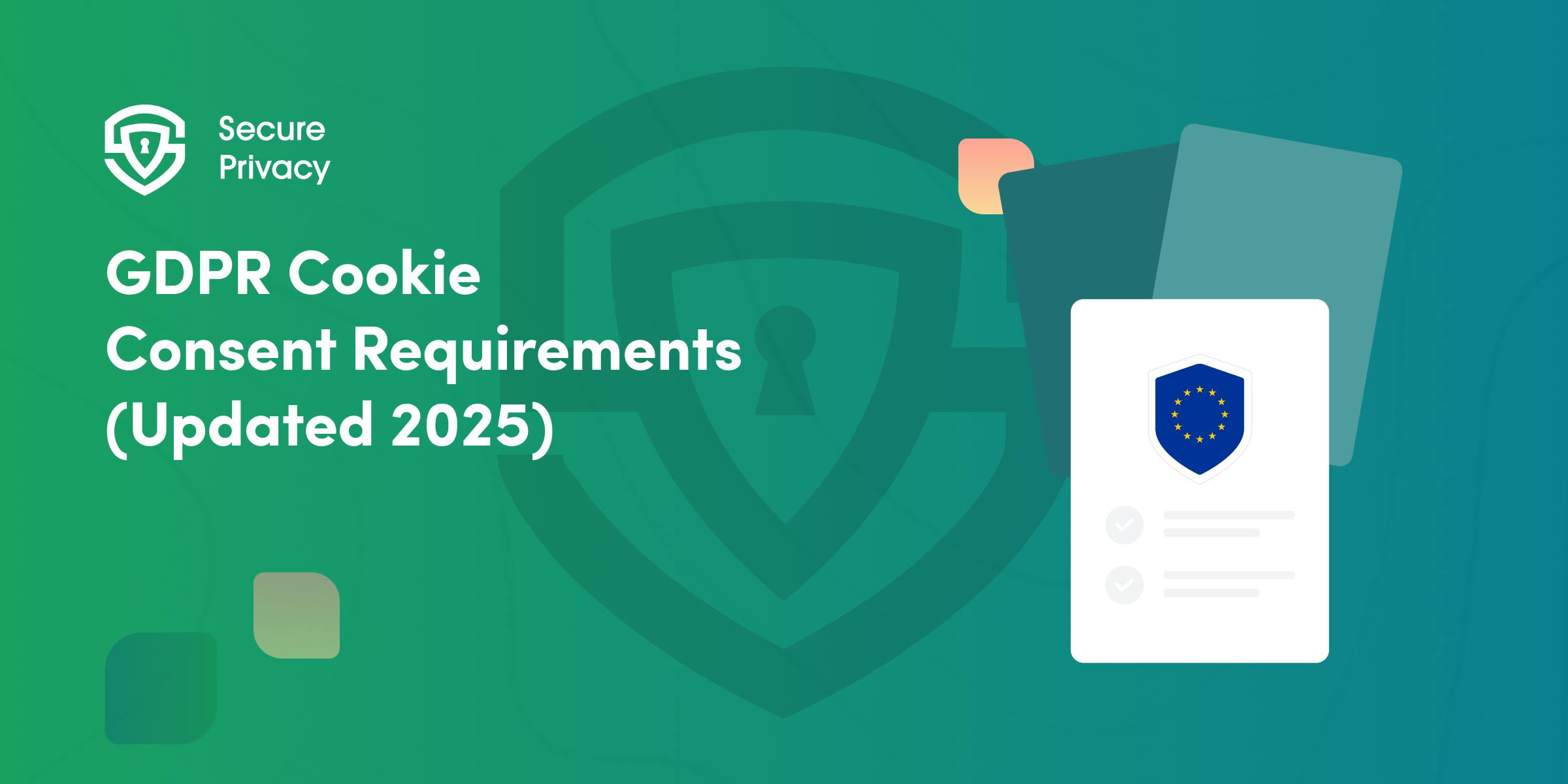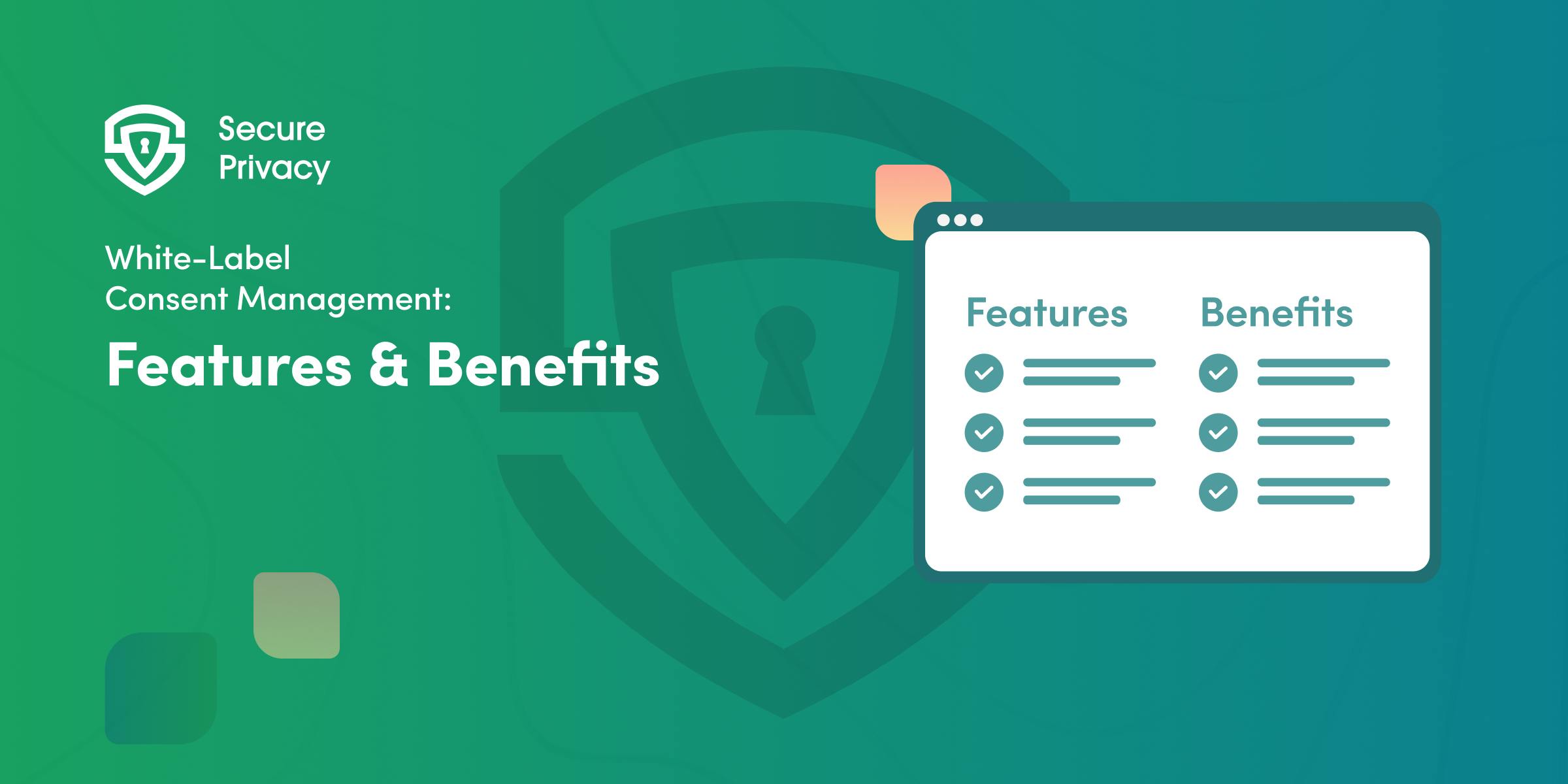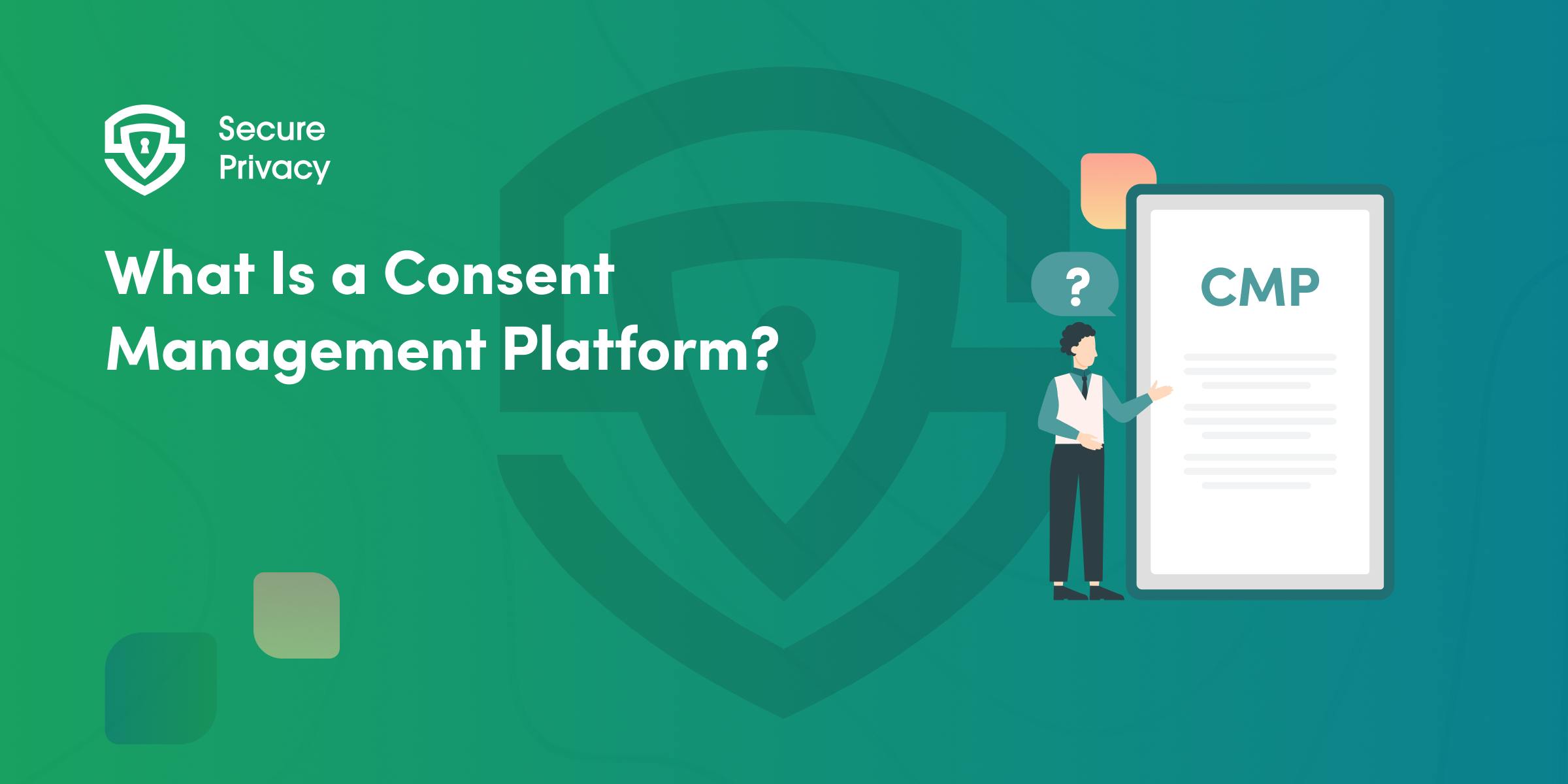The Ultimate Guide to Cookie Consent Management: Ensuring GDPR and CCPA Compliance while Protecting Data
Discover the significance of cookie consent management and how to implement it on your website. Learn about the legal requirements, the concept of consent, and best practices for protecting user privacy and complying with data protection laws.
Cookies are small text files that are stored on a user's computer or mobile device when they visit a website. Cookies are used for a variety of purposes, such as tracking user browsing activity, remembering user preferences, and delivering targeted advertising.
While cookies can be useful, they can also raise privacy concerns. Users have the right to know how their data is being used and to consent to or opt out of data collection.
Cookie consent management is the process of obtaining consent from users before placing tracking cookies on their devices. This is important for ensuring user privacy and complying with data privacy laws such as the General Data Protection Regulation (GDPR) and the California Consumer Privacy Act (CCPA).
In this blog post, we will discuss the importance of cookie consent management and how to implement it on your website.
What is consent?
A cornerstone of privacy and data protection is the concept of consent. Different laws and places have different ideas about what consent means legally. But regarding data protection and privacy, these different legal systems in different places have some important things in common.
Consent is an unambiguous affirmation from the user. It has to be given freely, which means the user can't be forced or scared into saying "yes" to a data processing activity.
Consent-based legal obligations are common in most global data protection laws. For example, Article 6 of the EU's General Data Protection Regulation (GDPR)and Article 7 of Brazil's General Data Protection Law (LGPD) say that a user's consent is required to legally collect and process personal data. This is in addition to other legal bases, such as complying with a law, fulfilling a contract, public interest, legitimate interests, etc.
In its guidelines about consent, the European Data Protection Board (EDPB), an organization whose goal is to make sure the GDPR is applied consistently and to encourage cooperation among the EU's data protection authorities, in its guidelines related to consent, said that "scrolling or swiping through a webpage or other similar user actions will never meet the requirement of a clear and affirmative action." If a user scrolls or swipes through a webpage or does something similar, they do not consent. According to the EDPB recommendations, scrolling does not constitute an unambiguous affirmative action on the user’s part.
When is consent required?
Consent is needed when there is no legal reason to process personal information.
In practice, this involves the use of cookies for data collection. Tracking website visitors with Google Analytics, tracking their browsing behavior, profiling users with social media pixels, allowing users to share content on social media through plugins, using third-party cookies, and so on—all of these activities require explicit user consent for collecting user data and processing it for any purpose.
Some laws worldwide, such as the California Consumer Privacy Act, the California Privacy Rights Act, the Virginia Consumer Data Protection Act, the Colorado Privacy Act, and others, rely on the opt-out principle. They do not require prior consent for data privacy compliance.
GDPR compliance, or LGPD compliance, on the other hand, requires opt-in consent for data processing. You’ll generally want to rely on another legal basis for processing. If you need the data to fulfill a contract, you should rely on that and not ask for consent. If your legitimate interests balancing test proves you have legitimate reasons to process data without consent collection, you’ll want to rely on that.
In all other cases, when you want to process data but cannot rely on any other legal basis, ask for consent.
Core components of consent
As was said above, consent must be a clear sign of permission and be given voluntarily. But these are not the only things that go into giving consent. GDPR, the most comprehensive law in the world concerning data protection, requires consent to be freely given, specific, informed, unambiguous, and easily withdrawn.
Consent must be freely given. It means that your users can't be forced to agree to the way you handle their data. The users should be able to say "no." Recital 42 of the GDPR of the European Union says that "consent should not be regarded as freely given if the data subject has no genuine or free choice or is unable to refuse or withdraw consent without detriment."
Consent must be informed. The user needs to know what is asked of them when they are asked for their consent. Problems with the legality of the user's consent may arise if he or she gives consent to something to which he or she is opposed without realizing it.
Consent must be specific. Asking users for permission to "use their data" without providing more context is insufficient. Instead, the website must list how it plans to use the user's information (i.e., behavioral marketing, analytics, etc.).
Consent must be unambiguous. This means there can be no doubt whether the data subject has given their consent. "Silence, pre-ticked boxes or inactivity should not constitute consent," according to Recital 32 of the GDPR.
Consent must be easily withdrawn. Website visitors can always opt out of further contact. Website owners must make it easy for them to do this. GDPR explicitly states that businesses have to make it just as easy for users to withdraw their consent as it was for them to give it in the first place.
What is consent management?
Consent management solutions let your site visitors choose what information they want to share with you. Consent management has become important for websites and apps that collect data through cookies and other trackers. This is because data privacy laws require websites and apps to get consent from website users before collecting their data through cookies and other trackers. Most privacy laws say that websites have to ask for visitors' permission, keep track of it, and use it responsibly.
It also informs visitors how and why you collect and use their information. A Consent Management Platform, or CMP, is a software tool that helps manage consent.
You should be aware that there is the possibility of financial penalties if you disregard consent management. Large fines have been set for breaking data protection laws, especially the GDPR and the ePrivacy Directive.
What is preference management?
Preference management means that your users can adjust their consent preferences themselves. CMPs allow you to provide them with a technical tool where they can provide consent for processing purposes they have refused before or withdraw the consent for all purposes.
Data privacy regulations do not require such a solution explicitly, but it will give your users a great experience communicating their consent preferences with you.
Why is cookie consent management important?
There are a few key reasons why cookie consent management is important:
- User privacy: Users have the right to know how their data is being used and to consent to or opt out of data collection.
- Data compliance: Businesses need to comply with data privacy laws such as the GDPR and the CCPA.
- User trust: Users are more likely to trust businesses that are transparent about their data collection practices and give users control over their data.
How to implement cookie consent management
There are a few steps that businesses can take to implement cookie consent management:
- Identify the tracking cookies on your website. You can use a tool such as Secure Privacy to scan your website for tracking cookies.
- Create a cookie consent banner. The cookie consent banner should inform users about the types of tracking cookies being used on your website and give them the option to consent to or opt out of data collection.
- Implement a consent management platform. A CMP is a software tool that can help you to manage cookie consent on your website.
What are the best practices for consent management?
Using a consent management platform is the best practice regarding consent management. It means that you outsource your website compliance to someone who does that professionally and has a big team to ensure that your website and apps remain compliant with the GDPR and other laws.
It allows you to meet the privacy compliance requirements for a small monthly fee while a whole team of developers, UX designers, and lawyers takes care of the compliance of the software. On top of that, CMPs take care of the user experience of your data subjects.
Cookie banners are often lamented for the customer experience, so you must ensure that their design is user-friendly. That’s how you build trust with users. We at Secure Privacy have created multiple designs to accommodate our customers and let them choose a cookie banner that aligns well with their brand and provides a great user experience while collecting user data lawfully.
See some examples of beautiful cookie banner designs and some examples of great cookie banner texts.
What is a CMP?
A Consent Management Platform (CMP) is a software tool that makes it easy for websites to follow cookie regulations. Before a user gives consent, your website needs to block cookies. CMPs do this. They block cookies, let users choose which cookies they want to accept, and let them change their privacy settings. That's exactly what the law says your website needs to do.
CMP solutions give website users detailed information about how their online behavior can be tracked, why it is being tracked, and which vendors and organizations are asking to use this information. Then, CMP tools give end users a clear choice of whether or not they want their online behavior to be collected and used by all or some of the parties listed. Users' choices are then saved in a central database for compliance purposes, and website users can change their privacy settings anytime. Learn the Six Steps for Website Compliance.
Consent Management Platforms are useful for both those who own websites and those who use those websites. From the owner's point of view, a CMP is a tool that asks for, receives, and stores users' "acceptance" or "rejection" of consent. It also tells you about third-party website providers, like those who do website analytics or marketing, and explains why these companies collect information about website visitors. From the point of view of a website user, on the other hand, the CMP gives users an easy-to-use interface that shows them what data is being collected from them and what third-party service providers are collecting personal data from them.
Why is a CMP important?
There are two main reasons why every site needs a CMP. For starters, it's the most effective tool for meeting the requirements of most data protection laws, especially when obtaining users' consent. Secondly, it helps establish credibility between websites and their audiences.
Most laws about data protection require businesses to get opt-in consent before they can collect and process personal data. Other legal bases, such as a contract or legal necessity, are also acceptable. CMP tools help websites and apps that collect information through cookies and other trackers meet the requirements of most modern data protection laws about getting permission.
Before delving into the specifics of a CMP, it is helpful first to define what "consent" means and what consent management entails.
How does a CMP work?
There are a lot of CMP providers out there, and though their technologies and software may differ, they should all meet a few minimum standards.
A CMP is usually a pop-up on a webpage that shows users all of their options for using cookies. In most cases, it appears in the form of a consent banner. Users can choose which cookie categories they consent to, or accept or reject all cookies. This is how they set their consent preferences. Cookies shouldn't be enabled if the user has explicitly disallowed them or has not given their consent.
A CMP is typically accountable for the following:
- Provide Information: Data collection and processing policies and procedures should be available to website visitors.
- Provide Privacy Preferences for Users: Users can accept or reject sharing their data for various purposes.
- Block Cookies Before the User’s Choice: If a user has not yet made a decision, all cookies and other tracking mechanisms are disabled.
- Collecting Consent Choices: Website visitors' acceptance or rejection of cookies is recorded.
- Record-keeping for Compliance: Log data is made available for cookie auditing purposes and can be used as evidence of compliance thanks to record-keeping procedures.
Secure Privacy as a Cookie Consent Manager
Secure Privacy is a Cookie Consent Manager and Consent Management Platform that helps businesses comply with GDPR, CCPA, and LGPD on their websites by giving them an industry-leading cookie consent and banner management solution. By using Secure Privacy, you can make sure that:
- You use a layered approach to request and explain cookie consent to users. Secure Privacy's cookie banner can explain to users why you need their consent to use cookies in the first place. In addition, our banner can be used to inform visitors about the various cookies and analytics tools you employ.
- You do not bundle consents. Instead, Secure Privacy's GDPR cookie banner lets users choose which cookies they consent to. This makes sure that consent is given for all purposes.
- You put an "opt-in" box on your website for every type of cookie that isn't already checked to show that the user consents.
- In the cookie notice, you explain how users can change their minds about accepting cookies, and you also give them a way to confirm their continued consent to cookie usage every six months.
- You keep track of visitors' consent in a way that demonstrates their right to revoke it.
- You add a link to the cookie notice to give users more information, such as which third parties will have access to their personal data if they agree to a third-party analytics cookie being installed.
Get Started For Free with the
#1 Cookie Consent Platform.
No credit card required

How to Create a Cookie Policy for Your Website (With Examples)
Your website is probably using more cookies than you realize, and each one could be a compliance violation if not properly disclosed. If you're still operating without a comprehensive cookie policy or relying on generic templates from 2018, you're exposing your business to fines while confusing users.
- Legal & News
- Data Protection
- Cookie banner
- Website Cookies and Tracking

White-Label Consent Management: Add a CMP to Your Offering, Fast
Your clients are asking about privacy compliance, and you're probably losing deals to competitors who offer complete cookie consent solutions. If you're an agency, SaaS platform, or IT service provider watching clients struggle with GDPR and privacy requirements, you're missing a massive revenue opportunity that's right in front of you.
- Legal & News
- Data Protection

What Is a Consent Management Platform? (And Why You Need One)
Your website probably has more tracking technologies than you realize, and each one could be a compliance violation waiting to happen. If you're still managing cookie consent with basic banners or generic templates, you're missing the bigger picture of what modern privacy compliance actually requires.
- Legal & News
- Data Protection
